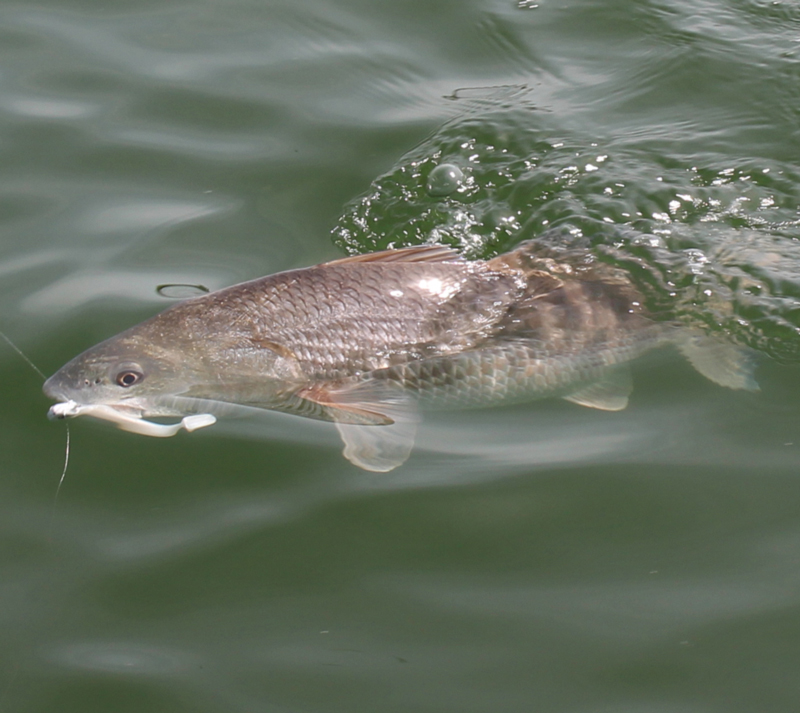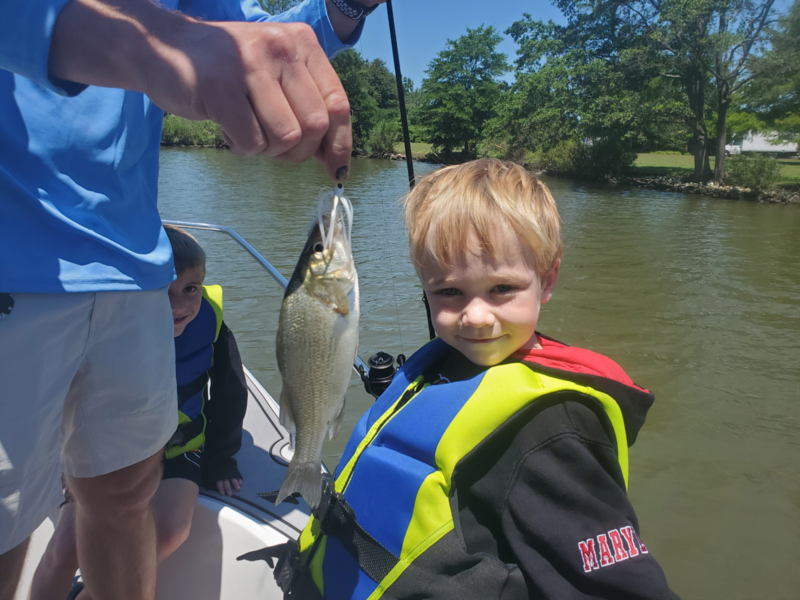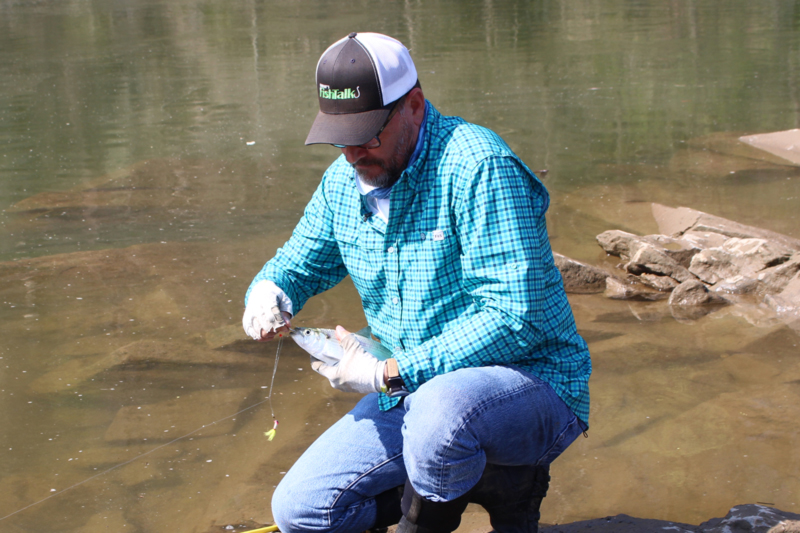Anyone who's ever tried Chesapeake Bay Fishing has almost certainly stumbled into a tackle store to grab some lures at one time or another, and struggled to pick which colors to go with. With a million different variations from white to nuclear chicken, picking out which colors to keep stocked in your box is no easy task and there is no magic color that will work in all conditions. So, let’s cover all the basic necessities as well as when each has its place. Regardless of what species you are fishing for, the same rules apply.

First let’s talk about how the time of day and water clarity play a role in color selection. Think of clarity as a spectrum with two main categories: clear and muddy. For clear water, natural patterns will work the best since the fish have the ability to really focus on the bait. Green pumpkin is a good natural color to imitate bluegill and crawfish. White is a good color to imitate shad and bunker. Transparent and ghost patterns also work well in clear water. For muddy water, fluorescent and dark colors stand out the best. Another effective tactic particularly for muddy water is adding contrast by using a different color skirt or dipping the tail of your baits in scented dyes. Using scents such as Pro-Cure or choosing abladed lure that sends out vibrations can also be to your advantage in the muddy water because it can help fish find your lure.

“Match the hatch” is a term you have likely heard before, and it simply means picking a lure that is similar in shape, size, and color to what the fish are feeding on. The best way to figure out what fish are feeding on is to take into account what baitfish and crustaceans live in the body of water you’re fishing, as well as paying close attention to the fish you catch. Sometimes fish will regurgitate their stomach contents when caught, which is an easy indicator of what the fish are eating. You may also notice things like bluegill tails or crawfish antennae sticking out of a fish’s gut. The majority of the time, however, it is just guesswork until you find a pattern.
The basic rule of thumb is to pick colors that best match what’s abundant in the watershed you are fishing. For instance, a pond with lots of bluegill will mean that green pumpkin and bluegill patterns will work best when targeting bass, and a lake with lots of shad will result in white patterns working well. One final note about matching the hatch: the forage fish will shift throughout the seasons as abundance changes.
When fishing in low light conditions and at night, resort to black, blue, and purple because they will be the most visible. (Bonus tip: when fishing in low light conditions use baits that give off lots of vibration and sound to help fish key in on them).

The exception to the previous rules is when trying to trigger a reaction strike from fish on beds or fish protecting fry. When bed fishing for bass or snakehead, you want your bait to aggravate the fish and make it strike out of aggression. The two best patterns for this are bluegill shades, because bluegill often get chased off beds for trying to eat eggs or fry, and solid white baits because they are good for sight fishing when trying to maintain contact with a bed.
When it comes to stocking your tackle box, the best way to make sure you are prepared for any condition is to keep a few simple patterns at all times. For bass and snakehead baits try and keep a more natural pattern like green pumpkin or white and a dark pattern of each of your favorite baits. That is the bare minimum, so feel free to snag any of your personal favorite color schemes as well. For saltwater soft plastics, especially on the Bay, the majority of baitfish can be imitated using white lures. So, try and keep a white pattern for clear and stained water and a chartreuse pattern for green water. For saltwater hard-baits you can keep it simple with a few chrome lures, white, and if you are into night fishing, some black or dark purple.
Finally, always remember that feeding patterns and environmental conditions are constantly changing so although a specific color may work one day, it may not be the ticket a few weeks later. Don’t be afraid to play around with colors until you find something that works.
Bonus Tip: Match the Patch
An easy rule of thumb to remember is to match lure color with water color. Simply look out at a patch of water, and choose accordingly. In clear water, white’s a good pick; in green water, chartreuse works well; in muddy water, root beer is a good option. Match the patch, and you have a solid starting point to work from.
Bonus Tip: Depth Charge
Remember that depth affects lure color, because colors fade as you go deeper into the water column. Reds begin to disappear just a few feet down, take on a whitish hue, and are completely gone at 15 feet. Oranges and yellows disappear next, followed by greens, and then finally blues. So an orange and red plastic with a white skirt may offer great color contrast when you hold it in your hand, but if you’re letting it sink to 20 feet then bouncing bottom, the contrast level is near zero.
-By Ian Rubin